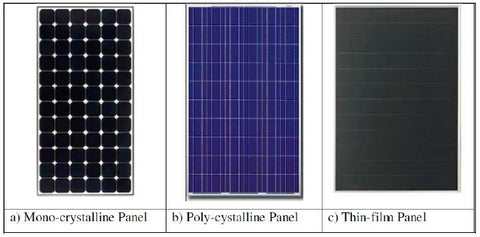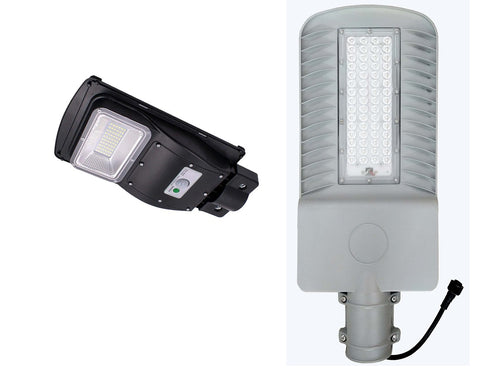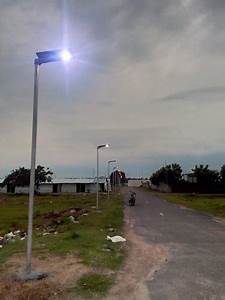A solar street lighting system is a standalone outdoor lighting unit used for illuminating streets or any open areas with the help of solar energy. With the recent advancements in solar photovoltaic technology, it is now possible to utilize solar street light in a wide variety of domestic as well as commercial applications. Solar LED street lights are proven to be the ideal cost-effective lighting solution for rural and urban areas alike.
Components and Function
A basic solar-powered street light system has the following components:
1. Solar (Photovoltaic) Panel
2. Lighting Fixture
3. Rechargeable Battery
4. Solar Charge Controller
Solar Panel:

A solar panel consists of multiple solar cells that are made of crystalline silicone. With the aid of solar cells, the panel absorbs solar energy and converts this into electricity in direct current (DC) form. There are two types of solar panels, Poly-crystalline Solar Panel and Mono-crystalline Solar Panel.
Lighting Fixture:

LED lamps are used in modern solar street lighting systems as they have better electrical efficiency and longer lifespan compared to incandescent and fluorescent lamps. LED emits more than 100 lumens per watt and can operate under low voltage and low power requirement.
Rechargeable Battery:

The electricity generated by the solar panel is stored in batteries during the day. Traditional solar street lights used lead-acid batteries; however, Lithium-Ion or LiFePO4 batteries are considered the most suitable storage systems in solar street lights as they are compact and have high specific energy, high DOD (depth of discharge) and higher number of charging cycles.
Charge controller:

The output from solar panels is variable and controllers are used to regulate the variable voltage from the panels and condition it to befit the safety of the batteries. Over-charging and over-discharging of batteries can be prevented with the help of charge controllers. PWM or MPPT controllers are used in solar street light systems.
Solar street lights utilize sensors for economic and technical viability. Ultrasonic sensors, IR Sensors and LDR sensors are usually used to control the LED functionalities in order to attain a more energy efficient system. Solar street lights with motion sensors light up fully only when motion is detected and the ones without sensors have dimming functions to save energy, where they operate in full brightness for the first few hours and at a lower brightness later.
Installation
ll the components are built inside the solar lighting unit; therefore, installation is relatively easier now with minimum labour and basic tools. A quality solar street light system must be robust enough to withstand harsh environmental -conditions as it is regularly exposed to sun, wind, rain, fog, pollution, etc. All the solar street lights available today are housed in durable plastic and metal and are waterproofed with IP65.
Preferred installation height for solar street lights is 4 to 5 meters and the lights must be installed 15 to 20 meters apart. They can be mounted at the top of a pole or on a wall depending on the weight and application of the solar light unit. Solar panels must be installed tilted to avoid water stagnation and to receive maximum amount of sunlight. To improve the efficiency of your lighting unit, the solar PV module must be cleaned occasionally depending upon the dust and debris collection on the panel.
Choosing your solar street light
Manufacturer, brand/model, certification and warranty of the solar products must be checked before the purchase and one must know about the following technical specifications of each component to choose the best product for you:
Battery:
Type, voltage, efficiency, life cycle and rated capacity in Ampere Hours.
Solar panel:
Module capacity, module type, operating voltage corresponding to the power output and lifespan.
Charge controller:
Type, control mode and working temperature.
Light source:
Luminous efficacy, LED illumination, viewing angle, colour rendering index, expected life, number of LEDs, nominal power in Watts, nominal voltage.
Street light pole:

Height, type, thickness and diameter of pole sections, type of arm (single arm or double arm) and weight of pole.
Contact manufacturer website or customer care for more technical details and pricing of solar street lights.